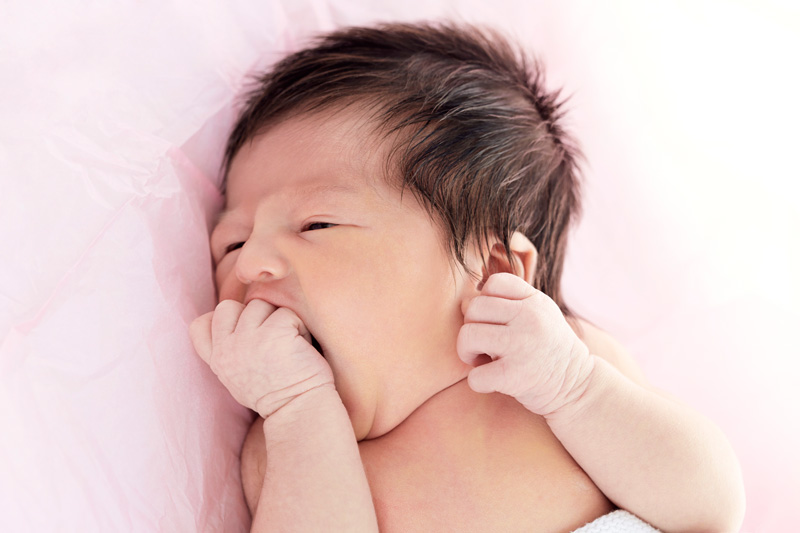A baby is considered full term at 37 weeks gestation. The baby’s due date is at 40 weeks gestation, which is 38 weeks after conception. Most doctors will induce labor if it has not started naturally within 2 weeks of a mother’s due date.
Become A Defender of Life
Your donation helps us continue to provide world-class research in defense of life.
DONATECharlotte Lozier Institute
Phone: 202-223-8073
Fax: 571-312-0544
2776 S. Arlington Mill Dr.
#803
Arlington, VA 22206

Month 9 and Birth
Labor, delivery, and new beginnings
- Post-conception week 34-38
- 9 Months Pregnant
- Gestational Weeks 36-40
The preborn child is quite active in the womb. The fetus drinks between a half a liter and a liter of amniotic fluid every day in the final month before birth.1
The baby’s tear ducts are not open until one month after birth.2 That means that infants cry without tears for the first month of their lives.
At birth, the fetal heart pumps about 2,000 quarts of blood per day!3 For comparison, an adult heart pumps about 6,000 quarts of blood each day.
A newborn has limited vision. Her visual acuity will be about 20/640, and she will not be able to sense all the colors until the cones in her retina finish developing.4
A newborn can identify his mother’s milk, simply by its smell. He can recognize his mother by her smell, voice, or a silent video of her face.
In the last month, the preborn baby prepares for birth. If the baby is born after 37 weeks gestation she is no longer considered premature, but rather “early term.” Her lungs are internally coated with a slippery substance called surfactant which prevents her alveoli from sticking together when she breathes out. In other words, she can thrive on her own, likely without any stay in the neonatal intensive care unit.
Now, since the fetus has practiced breathing in the womb, why aren’t her lungs filled with fluid when she is born? In fact, at birth her lungs are about half-filled with fluids, although these mostly come from the developing lungs themselves.5 The fluid leaves the lungs via three different routes:
- A little gets squeezed out the mouth and nose by the pressure on the baby’s chest during a vaginal delivery.
- A surge in stress hormones at birth helps the lungs pump the rest of the fluid out of the airspace.6 Some of this fluid moves through the lung tissues into the lymph system. These vessels are comparatively larger at birth than they are in adults.
- Some moves through the lung tissues into the lung’s blood system.7
Human newborns take between 4 and 11 breaths before the lungs establish adequate gas exchange.8 Furthermore, healthy newborns take between 8 and 10 minutes to establish normal oxygen saturation levels above 90%, and between 30 and 90 minutes to establish normal breathing patterns.9

No one knows exactly how labor begins, but research suggests that the fetus sends hormonal signals to the mother’s uterus to start labor.10 Powerful contractions push the baby out. The soft plates in his skull squeeze together and overlap to allow his large head to move through the birth canal. As far as we know, childbirth is the most stressful event of a child’s life.11 Circulating stress hormones spike at about 10-15 times higher than resting levels, much higher than levels seen in severely stressed adults. Furthermore if the baby experiences oxygen deprivation during labor, the circulating stress hormones can increase to levels that would cause a stroke in an adult.12
The baby is born with about 40% more neurons than he will ever have again.14 Most scientists agree that humans do not grow new neurons in the cortex after birth, although premature babies may get an extra few months to finish growing neurons.15 During the next three years, these neurons form connections, called synapses, with thousands of other neurons, until there are over 1 trillion synapses in the brain.16
Development follows a pattern of blooming and pruning. Different regions of the brain show a peak number of synapses at different times. For example, the visual cortex has the maximum number of synaptic connections when the child is 2 to 4 months old, while the frontal cortex shows a peak number of synaptic connections when the child is 2 years old.18 Synapses continue to form and die off, and circuits get faster by increasing myelination until around age 25.19
Why would the brain create more neurons and synapses than it needs, only to get rid of the extras? The answer lies in the interaction of genetic and environmental factors during brain development. Basically, genes direct newly-formed neurons to their correct locations, and then sensory information and experiences support the survival and connectedness of these neurons. This allows the brain to fine-tune itself in response to external inputs. The inputs stimulate neural activity, and repeated use strengthens synapses. Synapses that do not get used very often weaken and get eliminated in the pruning process while frequently used synapses stay efficiently connected and support a child’s cognitive abilities. By blooming and pruning, both nature and nurture play vital roles in shaping a child’s brain.20

The baby is born with 300 bones, many of which will fuse together to form the 206 bones found in an adult. Some of these bones are made completely of a softer, more flexible tissue called cartilage. As the child grows, bone replaces the cartilage. During childhood, the cartilage grows and gets replaced by lighter and stronger bones. This process does not end until age 25. At that point, the bones are as big as they will ever be.21










